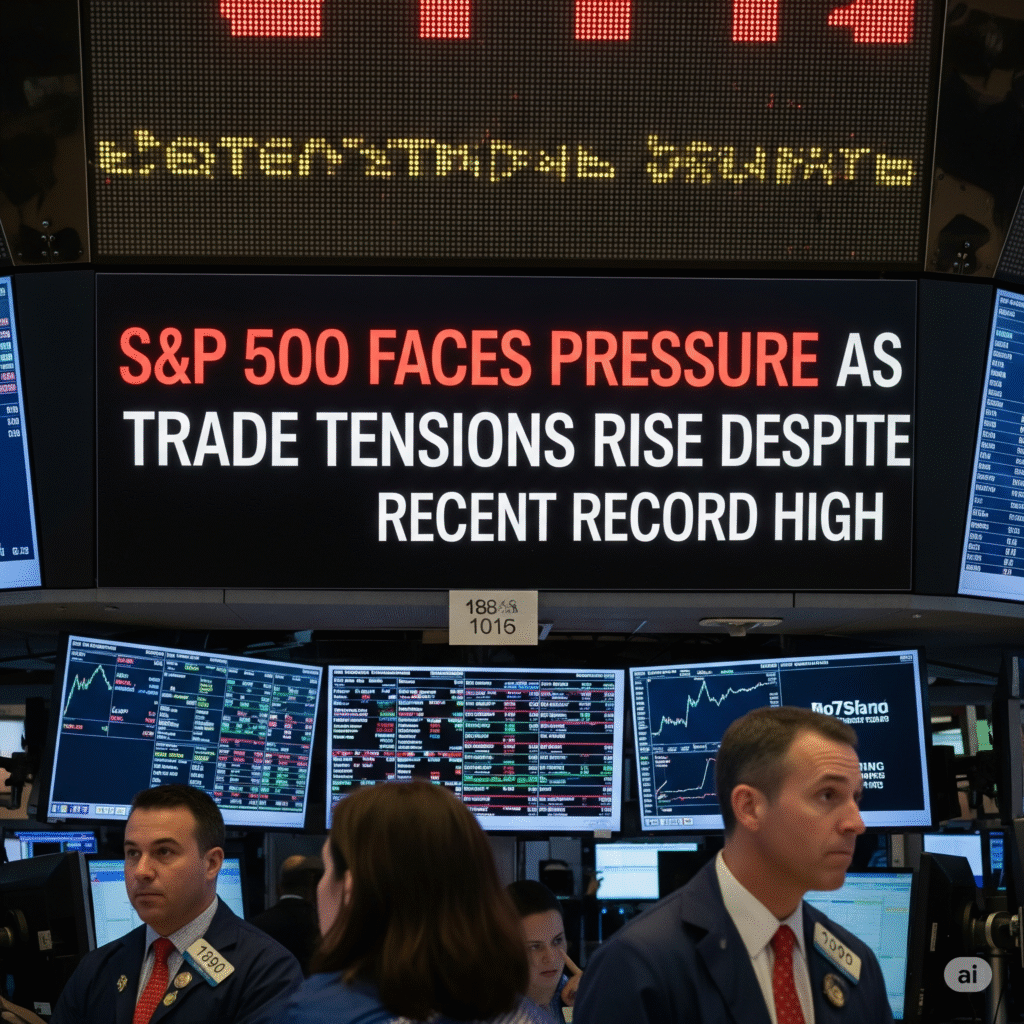
On July 4, 2025, as U.S. markets took a break for Independence Day, the S\&P 500 was under slight pressure due to rising concerns over potential new tariffs. Although the market was closed for the holiday, S\&P 500 futures—used to predict market movement—fell by about 0.6%. This drop followed fresh remarks from former President Trump suggesting that a new wave of tariffs could soon hit imports, especially from key trade partners.
🔺 Record High Before the Dip
Just a day before the holiday, on July 3, the S\&P 500 hit a new record, closing above 6,279. Unemployment fell to 4.1%, and job growth exceeded expectations. This gave a boost to confidence in the economy and pushed the market up by 0.8% that day.
However, some analysts now believe that the recent surge in stock prices might have gone too far, too fast. A few investment firms, including Bank of America, have warned that the market may be overbought and could be due for a pullback.
🌍 Global Concerns Resurface
Adding to investor worries, the possibility of new tariffs is rattling global markets. The White House has sent letters to various countries warning of possible tariffs ranging between 10% and 70%. The decision is expected by July 9. These trade tensions are making markets more nervous, especially in Asia and Europe, where stocks have already started to show signs of weakness.
Countries like South Korea and Germany could be directly affected by these new tariffs. As a result, investors worldwide are watching closely to see how these potential changes might affect international trade and corporate profits.
Nissan Recalls Over 480,000 Cars Due to Engine Problems
📊 Investors Staying Cautious
While July is usually a strong month for stocks, this year is different. Investors are being more careful because of both the rising trade risks and the uncertainty around U.S. central bank policy.
The recent rally in the S\&P 500—driven by big tech companies and strong retail interest—has pushed the index up more than 25% since April. But some experts say this momentum may not last if trade problems get worse or if the Federal Reserve delays cutting interest rates.
At the moment, the chances of an interest rate cut in July are very low. The strong jobs data has made it less likely that the Fed will reduce rates soon. This could affect borrowing costs for businesses and consumers, which in turn might slow down spending and growth.
📌 What to Watch After the Holiday
1. Tariff News: If the U.S. announces new tariffs before July 9, stocks could fall. But if talks improve or the tariffs are delayed, the market might continue its rally.
2. Economic Data: More reports on inflation and job growth could change how the Fed plans its next move. That will also influence stock prices, especially in sensitive sectors like tech and finance.
3. Big Tech AI and tech stocks have been leading the market this year. Any changes in investor sentiment toward these companies could strongly affect the S\&P 500 overall.
✅ Final Thoughts
The S\&P 500 is currently at a turning point. It recently hit a record high, but now faces risks from outside factors like tariffs and uncertain Federal Reserve policies. While the economic data has been positive, external events could change the market direction quickly.
Investors are advised to stay alert and avoid big risks until more clarity comes on the trade situation. The coming week could be a deciding one for the S\&P 500’s short-term trend.









Leave a Reply